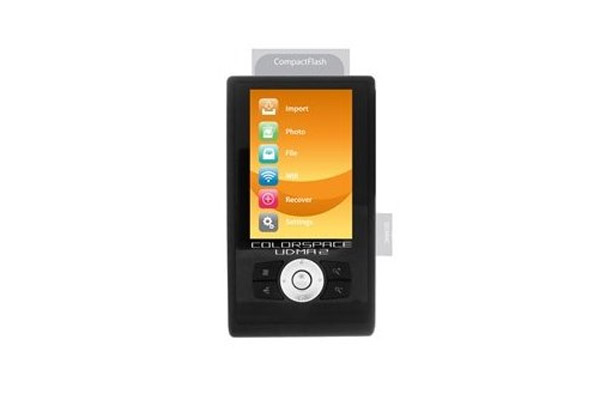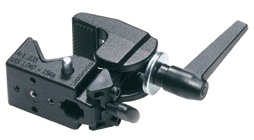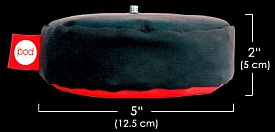I’ve written about metering before but I thought I’d recap an important point about the light meter in your camera: it’s a stupid, stupid device. Which isn’t to say that it’s useless. Far from it. Your camera’s light meter is an extremely useful tool. But, you have to know when you can trust it and when you can’t.
Tag: equipment
Vibration reduction/image stabilization video demonstration
Camera shake is the bane of photographers everywhere. No photographer has perfectly steady hands. Once shutter speeds drop, camera shake begins to seriously affect image sharpness. Fortunately, there are solutions. Nothing will give you consistently sharper photos than a sturdy tripod and every photographer should have one. But there’s a high-tech solution, too: image stabilization. Read on to learn a little about this interesting technology and view a through-the-lens video demonstration of it in action.
… Continue reading Vibration reduction/image stabilization video demonstration
Review: Rentglass.com lens rental service
Many professional photographers rent lenses. Rather than spending huge sums on lenses (or other equipment), they rent just what they need for the job at hand. Sounds good, right? But not everyone has a decent camera shop nearby with rental service. In fact, I’d wager that you could only find lens rentals in large metro areas. Rentglass.com, an online lens rental company operating out of Florida, solves that issue by delivering lenses directly to you and at a price often cheaper than bricks and mortar stores.
… Continue reading Review: Rentglass.com lens rental service
Portable Photo Storage Review
Storing your photos may not seem a big problem, unless you decide for a long travel with your photo camera. While modern memory cards can hold thousands of JPG files, having the same amount of RAW data may put you in trouble.
Of course, you can take a laptop with you, but for a number of situations it may appear too large and heavy. One of the solutions is a portable storage device, which is independent. In other words, one that does not require a computer to transfer data to it.
A really interesting solution is a Sanho HyperDrive COLORSPACE UDMA 2 Multimedia Storage

The amazing Bogen Super Clamp
 The Bogen Super Clamp (Bogen Imaging) is a neat little piece of hardware. This simple looking device can attach itself solidly to almost any object with a width between 0.5 and 2.1 inches (1.3-5.3 cm). That includes shelves, tripod legs, light stands, doors, poles, fences, tree branches—or in my case, the neck of my daughter’s two-wheeled scooter. That’s right, Photodoto’s new unofficial slogan is, “Doing nutty stuff with expensive camera equipment so you don’t have to.”
The Bogen Super Clamp (Bogen Imaging) is a neat little piece of hardware. This simple looking device can attach itself solidly to almost any object with a width between 0.5 and 2.1 inches (1.3-5.3 cm). That includes shelves, tripod legs, light stands, doors, poles, fences, tree branches—or in my case, the neck of my daughter’s two-wheeled scooter. That’s right, Photodoto’s new unofficial slogan is, “Doing nutty stuff with expensive camera equipment so you don’t have to.”
Review of The Pod camera platform
 The Pod is essentially a fancy-pants version of the classic “beanbag tripod,” a device that photographers have been using for years as a makeshift tripod. The Pod people claim that The Pod “takes the shake out” and is a “breakthrough in effortless camera set-up.” Continue reading my review to find out what I thought of it and to have a shot at winning your own Pod.
The Pod is essentially a fancy-pants version of the classic “beanbag tripod,” a device that photographers have been using for years as a makeshift tripod. The Pod people claim that The Pod “takes the shake out” and is a “breakthrough in effortless camera set-up.” Continue reading my review to find out what I thought of it and to have a shot at winning your own Pod.
Quick photography hack: Softening your built-in flash
An external flash unit with an adjustable head is a great addition to any photography kit. With it you can bounce the light off the ceiling or a wall nearby or even use it off the camera to soften and change the light and reduce red eye. But compact camera owners are usually stuck with the built-in flash which is fixed in position next to the lens. Here’s a quick tip to help soften that built-in flash: try holding a piece of semi-transparent paper or white plastic (like from a milk jug) in front of the flash. It will act as a makeshift diffuser and help soften the light hitting your subject.
… Continue reading Quick photography hack: Softening your built-in flash
Indoor flash tip: point the flash the wrong way
One of my favorite techniques when using a camera mounted flash indoors is to point it behind me. Unfortunately, this only works if you have a flash with a rotating head, so compact camera owners or anyone else stuck with a built-in flash are out of luck.
… Continue reading Indoor flash tip: point the flash the wrong way
Make a pinhole camera for Worldwide Pinhole Photography day
Trying your hand at pinhole photography is easy and can be a lot of fun. Pinhole cameras pre-date autofocus and megapixels. They hearken back to a simpler time when a camera was literally just a box with film in the back. Photos made with pinhole cameras exude a fuzzy, low-fi charm that’s hard to resist. That said, it’s not for everyone, but I hope you’ll give it a try. If you’re anything like me, you’ll feel a little magic happening when you see that first photo. It’s sort of like stepping back in time. Have I convinced you? Do you have 30 minutes to spare? Read on to find out how to get started.
… Continue reading Make a pinhole camera for Worldwide Pinhole Photography day
Camera modes
If you want to get good photos, learning how to use your equipment is a must. And that doesn’t necessarily mean digging out the the owner’s manual and poring over it line by line (although, I do recommend you read it at least once). You can learn about your camera by using it. Camera modes are a great place to start.
You may be thinking to yourself, “But I have a fully-automatic compact camera.” You may be surprised to find out that many compact cameras have more than one mode and many of them even have a manual mode that gives you fine-grained control over the exposure.
to start
making profit!








